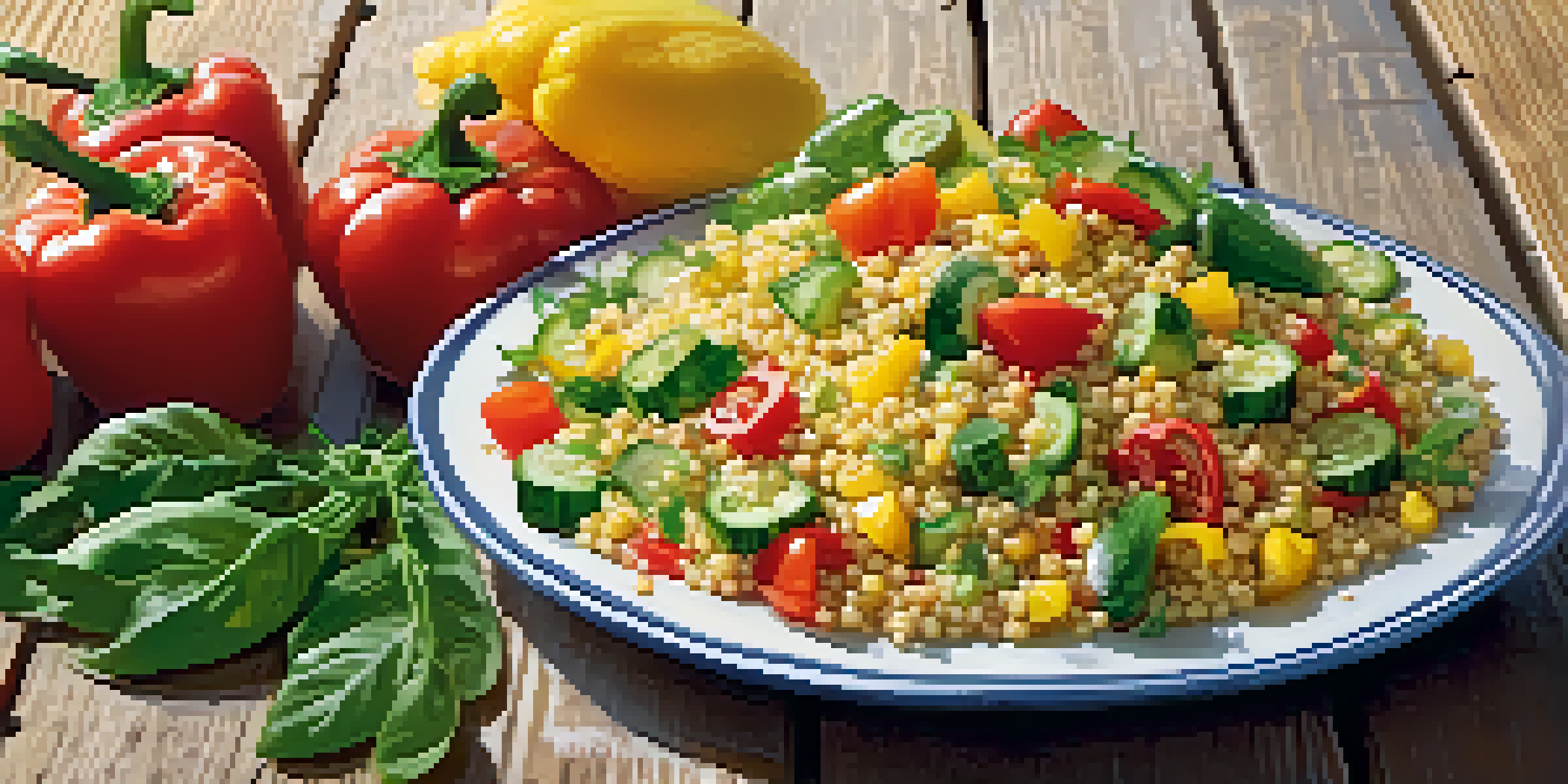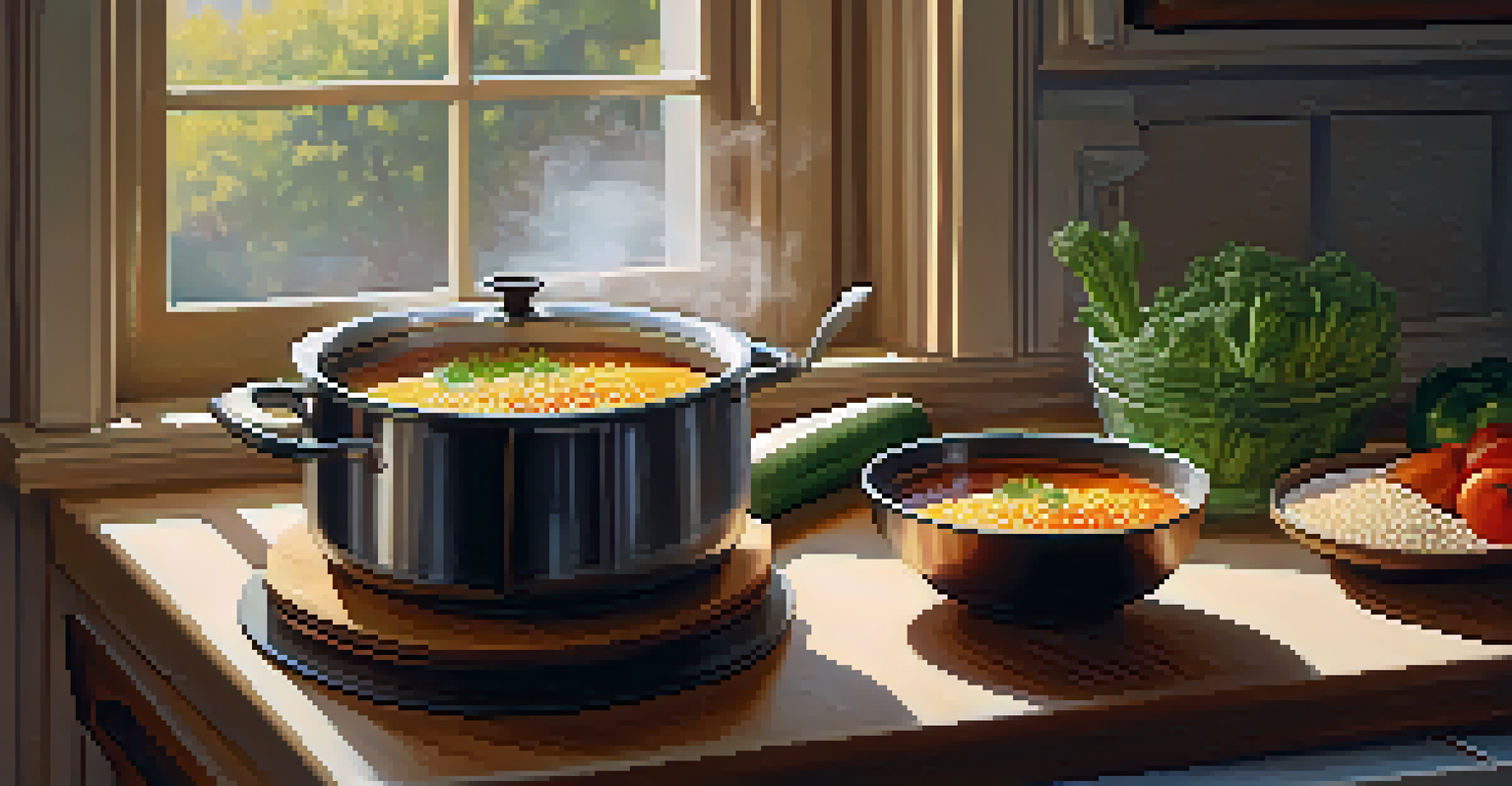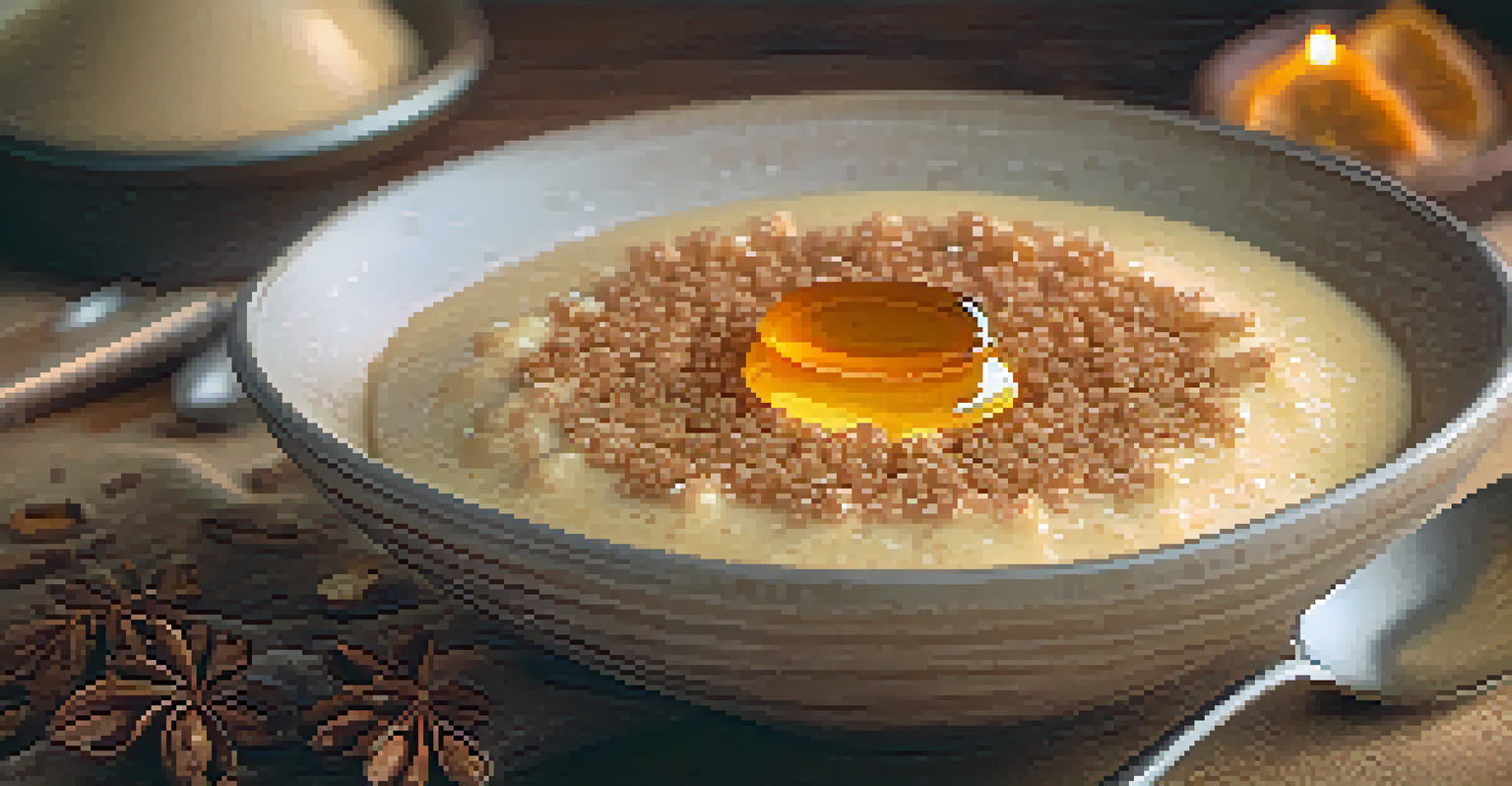Millet Magic: Versatile Grain for Vegetarian Recipes

What Makes Millet a Superfood for Vegetarians?
Millet is often hailed as a superfood, especially in vegetarian diets. This tiny grain is packed with nutrients like protein, fiber, and essential minerals, making it an excellent choice for anyone looking to boost their health. With its low glycemic index, millet can help stabilize blood sugar levels, too, which is a significant benefit for many individuals.
Let food be thy medicine and medicine be thy food.
One of the standout features of millet is its versatility. It can be used in a variety of dishes, from savory to sweet, and can easily adapt to different flavors. Whether you're making a hearty salad or a comforting porridge, millet fits right in, providing a satisfying texture and a nutty taste.
Moreover, millet is gluten-free, making it a fantastic option for those with gluten sensitivities or celiac disease. This means it opens up a world of culinary possibilities for anyone looking to avoid wheat while still enjoying delicious meals.
Exploring Different Types of Millet
There are several types of millet, each bringing its own unique flavor and texture to the table. Common varieties include pearl millet, foxtail millet, and finger millet. For instance, pearl millet has a slightly sweet flavor and a chewy texture, making it great for pilafs and salads, while finger millet is known for its earthy taste and is often used in porridge.

Understanding the different types of millet helps you choose the right one for your recipes. For example, foxtail millet cooks quickly and is perfect for busy weeknight meals. On the other hand, finger millet, which is high in calcium, can be a nutritious addition to breakfast dishes.
Nutritional Powerhouse for Health
Millet is a nutrient-rich superfood that supports vegetarian diets with its high protein, fiber, and mineral content.
By experimenting with these varieties, you can discover new flavors and textures that enhance your vegetarian meals. Each type of millet offers a distinct culinary experience that can elevate your cooking.
Cooking Techniques: How to Prepare Millet
Cooking millet is surprisingly simple and can be done using various methods. The most common way is to rinse the grains under cold water, then cook them in a saucepan with water or broth. A basic ratio is one part millet to two parts liquid, bringing it to a boil before reducing to a simmer until the grains are fluffy.
The greatest wealth is health.
For added flavor, you can toast the millet in a dry skillet before cooking. This technique enhances its natural nuttiness and can elevate the taste of your final dish. Additionally, cooking millet in vegetable broth instead of water adds an extra layer of flavor.
Once cooked, millet can be used as a base for salads, mixed into soups, or even formed into patties for a veggie burger. The possibilities are endless, making it a perfect staple for any vegetarian kitchen.
Delicious Millet Salad Recipes to Try
One of the best ways to enjoy millet is in a refreshing salad. A simple millet salad could feature cooked millet mixed with diced vegetables like bell peppers, cucumbers, and tomatoes, dressed with olive oil and lemon juice. This dish is not only vibrant but also packed with nutrients.
For a more substantial option, consider a Mediterranean-style millet salad with chickpeas, olives, feta cheese, and fresh herbs. This combination offers a delightful mix of textures and flavors, making it a crowd-pleaser at any gathering.
Versatile Cooking Options
Millet's adaptability allows it to be used in a variety of dishes, from salads to desserts, enhancing both flavor and texture.
Another delicious choice is a warm millet salad with roasted vegetables. Toss cooked millet with seasonal veggies drizzled with balsamic glaze, creating a comforting and nourishing meal that feels both hearty and healthy.
Millet in Soups and Stews: A Hearty Addition
Millet can also be a fantastic addition to soups and stews, providing substance and nutrition. When added to a vegetable or lentil soup, millet helps thicken the broth while offering a satisfying chew. This makes it an excellent choice for those chilly evenings when you crave something warm and filling.
To incorporate millet into your soups, simply add it during the last 15-20 minutes of cooking. This allows the grains to absorb the flavors of the broth while becoming tender. Whether you’re making a classic minestrone or a spicy curry, millet enhances the dish beautifully.
Additionally, using millet in stews can help create a more balanced meal. Its high fiber content helps keep you feeling fuller for longer, making it a smart addition to any vegetarian stew.
Baking with Millet: Healthy Grain Alternatives
Millet can be a fantastic alternative to traditional flours in baking, adding a unique flavor and nutritional benefits. You can use millet flour to make pancakes, muffins, or even gluten-free bread. The slight nuttiness of millet flour can add depth to your baked goods, making them more enjoyable.
When substituting millet flour for all-purpose flour, it’s best to start with a mix of both. A common ratio is about 25% millet flour to 75% all-purpose flour, which allows you to retain the texture while introducing the health benefits of millet.
Healthy Baking Alternative
Substituting millet flour in baking introduces unique flavors and nutritional benefits, making it a great alternative to traditional flours.
As you become more comfortable, you can experiment with increasing the amount of millet flour in your recipes. This not only boosts the nutritional content but also encourages creativity in the kitchen.
Creative Dessert Ideas Using Millet
Millet isn't just for savory dishes; it can shine in desserts as well! One delightful option is millet pudding, similar to rice pudding but with a twist. Cook millet in almond milk and sweeten it with honey or maple syrup, then add spices like cinnamon or nutmeg for a comforting treat.
You can also use cooked millet to make energy balls. Combine millet with nut butter, oats, and dried fruits for a nutritious snack that’s perfect for on-the-go. These bite-sized delights are not only satisfying but also provide a good energy boost.

Lastly, consider making millet-based cookies. Replace some of the flour with millet flour to create a unique texture and flavor that your friends and family will love. Who said healthy desserts can't be delicious?